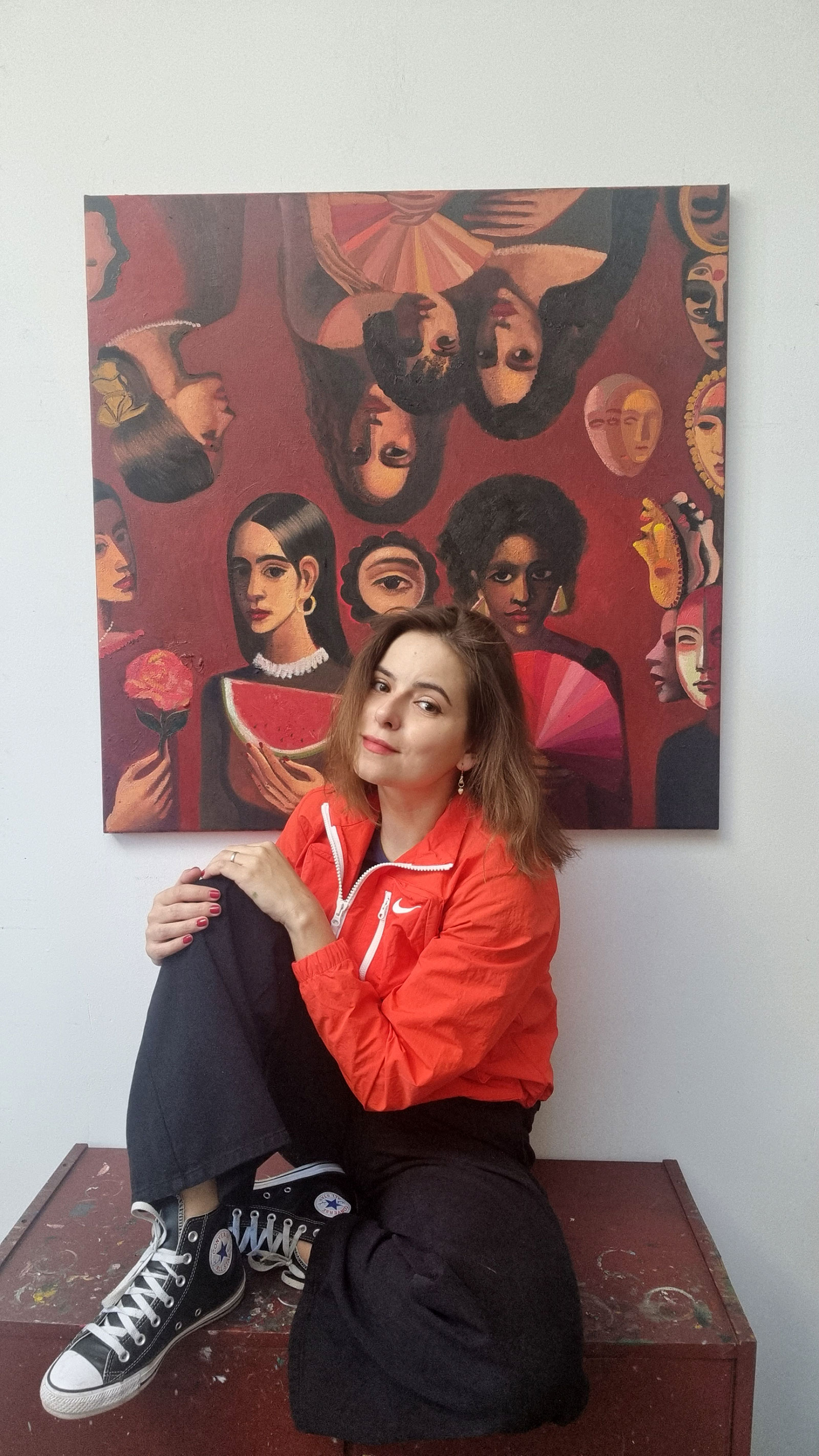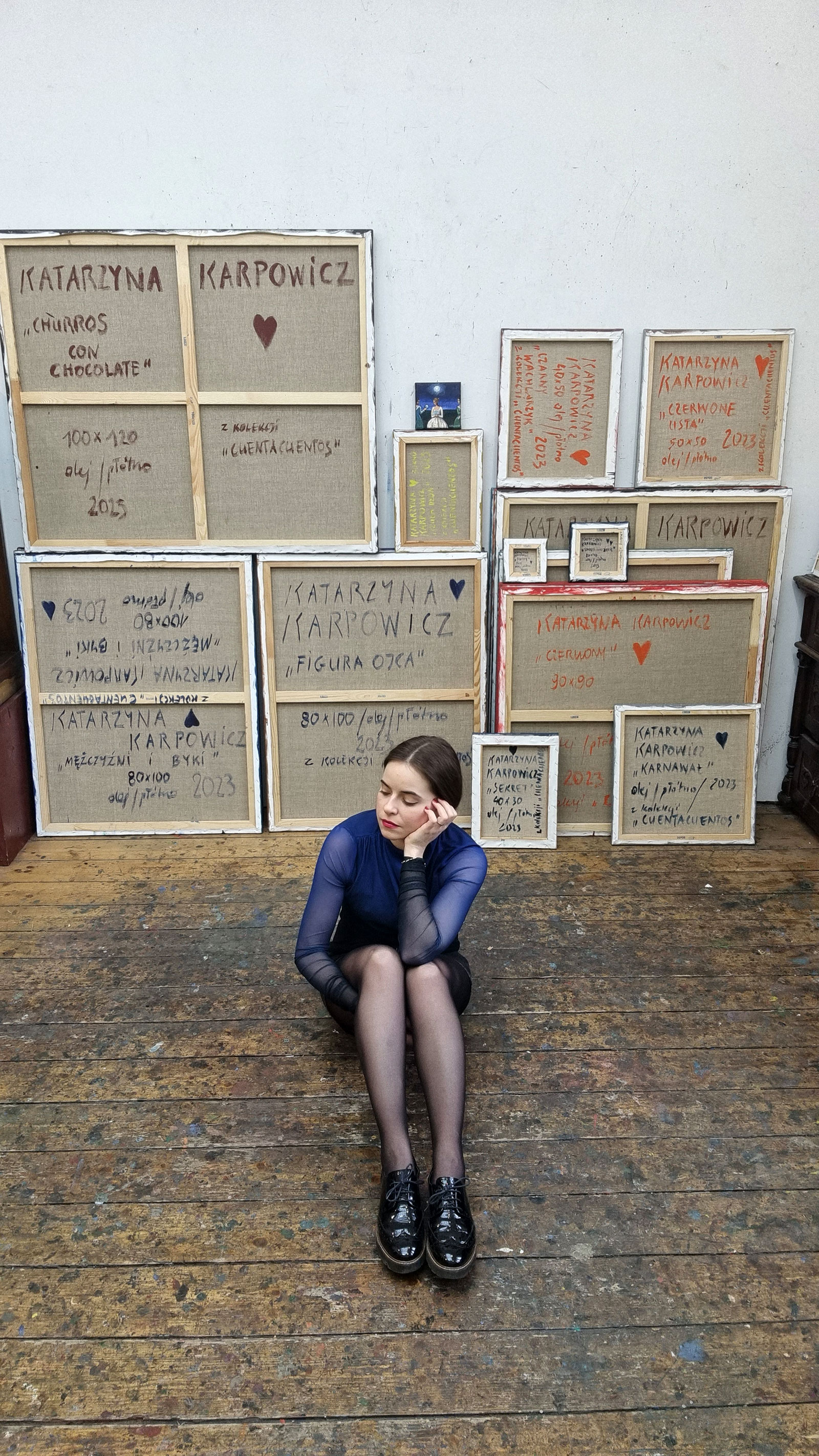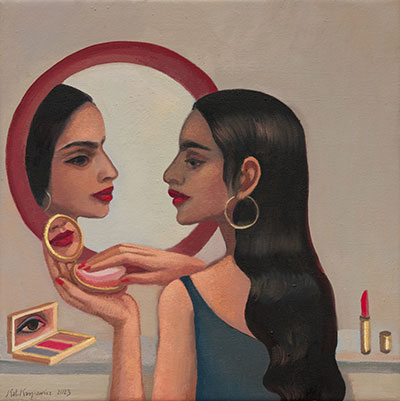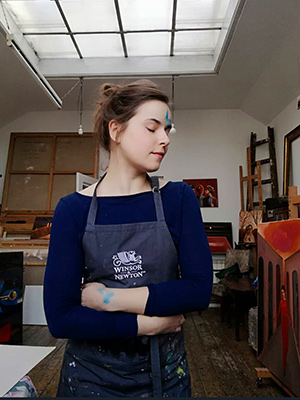Fiery
I’m going to see Kasia, I said, and I put on a red jumper. I left the black one, freshly laundered, on a chair. Leaving the house, I stopped between the holly and the rowan. When I got there, to the old house in the centre of Krakow, a house build around internal workshops, Kasia came downstairs to get me. So I wouldn’t get lost. We went inside, my gaze greeted the portrait of her Dad, the kitchen appliances, and then – the workshop proper. The red of the holly, the rowan berries, the jumper, the burgundy... How do I know that, according to one story, Adam Mickiewicz asked for burgundy with his last words...
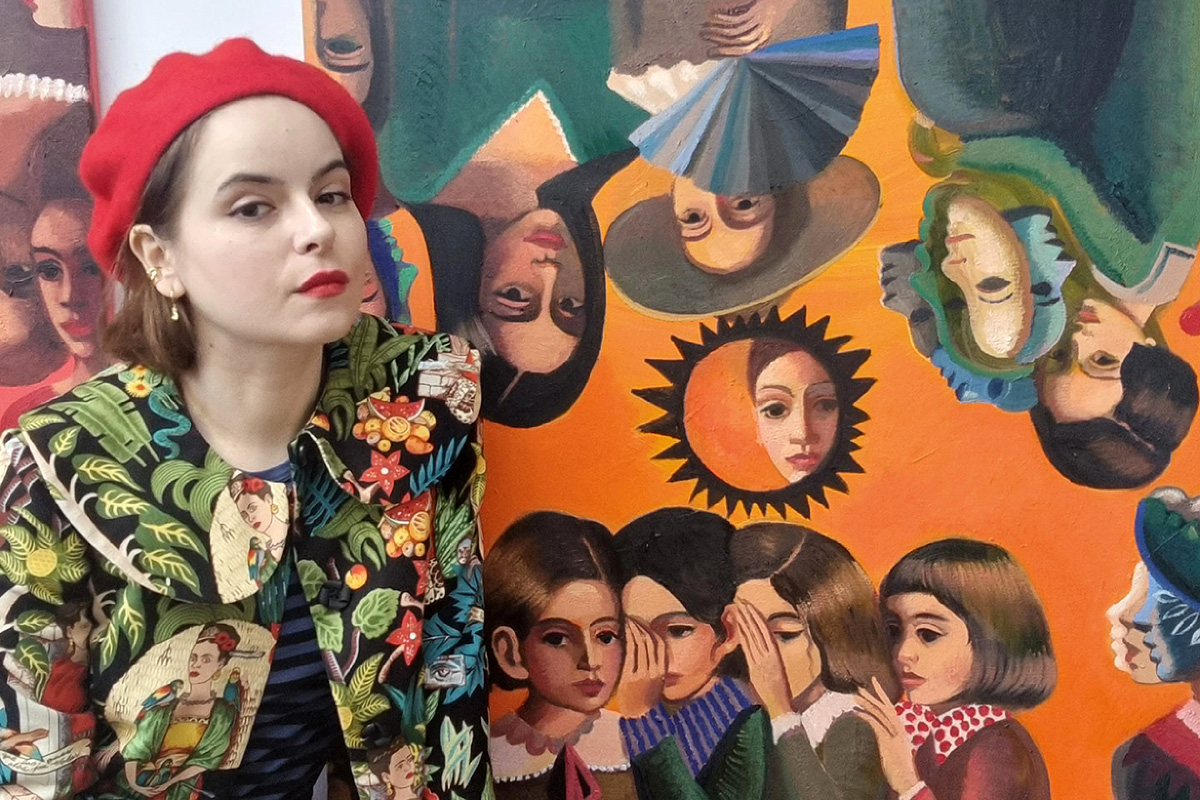
Kasia’s reds, those of objects and colours in paintings are overlaid with the reds of my home. The red of the calendar from 2018, which serves me as a good old notebook with phone numbers. The red spines of exhibition catalogues: Pasolini, Michaelangelo, the year 1913... The red of the ribbon on the stem of the white-spotted flower I received from Kasia during our first meeting, in Warsaw. But the reds I uncover (or perhaps ‘recover’, as you say about something you once had and lost, and then found again) on the artist’s canvasses are different. Not from the ones I have at home. Different in the sense of a different palette. Palette – planet.
I want to lie down. I lie down on the floor that is immediately named ‘Pollock’s bed’ in my head. The floor is clean and spotted. The spots are a natural composition. Scattered by the force of droplets falling from the brush. Why is it that with a painter, even an accidental composition of spots on a wooden floor has order, intention, cleanness? If I held the brushes and carried them, wet with paint, above a hardwood floor, I’m certain that the result would be some sort of East German houndstooth. Probably beige, muted. An absurd attempt at a silly ordering of chaos. Ugly.
Only later, when Kasia sends me the pictures, do I see myself on the floor, in the workshop, among the reds in the paintings. What’s interesting, among the thought our and planned fields in the paintings, filling parts of the body and space, the spots on the floor lose their redness. They disappear. They’re like red glints of light reflected on the wood. A curious question pops into my mind: did this man hanging on the cross, bleeding, have red-stained soil under his feet, or did his blood also have a grey shadow? The soil is not a mirror. Fortunately. For it is the mirror that is treacherous, not the shadow. Everything that really exists, exists is a personification, a lyrical figure, and everything that is reflected must had the wisdom of fate. Which means transience. What would it be like if the reflected sky spread out under our feet like a blue meadow?

If this exhibition of works by Katarzyna Karpowicz were to have a conceptual title, ‘intimacy’ springs to mind immediately. The problem is that the word ‘intimacy’ is no longer intimate. So much intimacy in cards, on the internet, on lips. Intimacy has been foretold (in the sense that it has been brought to the fore in its telling). Told of without intimacy. Un-intimately. The lips that survive its telling are more intimate. The dress that covers the intimacy while also replacing it. Let’s think: the scarlet of a veiled belly. It’s breathtaking. We pant with excitement without intellect, with a mind stripped of passion.
The intimacy of the organism, the object, the shadow of memory breaks through Katarzyna’s reds. The more blunt it is, the more understated. Perhaps (is it so, o Painter?) it shades the bluntness since it is so often an escape from colour.
Certainly what shades is the aura of the scenes, which is a reflection of the aura of being in the world. Softness. An attempt at concealment. Another strangeness – concealment in red? Yes. If one perceives the world in full passion, if the world is all in red, then the red becomes the highest degree of sublimation, of fragility, of silence.
Lying on the floor, photographed by Kasia, among her paintings, on the spots left by her brushes, in a red jumper, I am a colourless shadow of her reds. But never mind about me. What are, I ask, these depictions, these paintings? I know: they are cards. Painted fates. Ladies, jokers, queens and kinds (characters and motifs), jacks, fancy, dreaming and dreamed, pre-war Jews drawn into the world of toreadors in an attempt to save them – because has anyone even seen a toreador in a prison uniform, behind wires?
They are strange cards, horrific as in some dreams of Alice in Wonderland, contradicted in the oneiric logic of a reordered life. Melancholy. The sad figures of those who have already been painfully played with. Spilled outside the picture and applied anew – a jack with a tilted head leaning his temple on the shoulder of a lady, a king without a crown, a queen who doesn’t want to be the symbol of gambling, giving up her card untouchability, surrendered to be refigured into a mysterious, touchable secret. Rows of women’s faces, like rows of repetitive and singular fates. Entrusted to other faces as shadows and senses.
Some of these portrait groups are laid out in multi-perspective squares – the lower row may be the upper, moveable from north to south, as in playing cards, where the feet of the king and the jack are their severed feet, not heads. Feet – heads. Feet – faces. Counter-faces. One could say ‘like they’re sitting at a table, if these figures were not reversed.
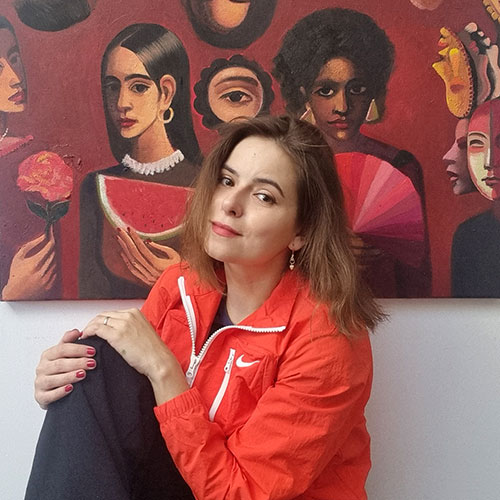
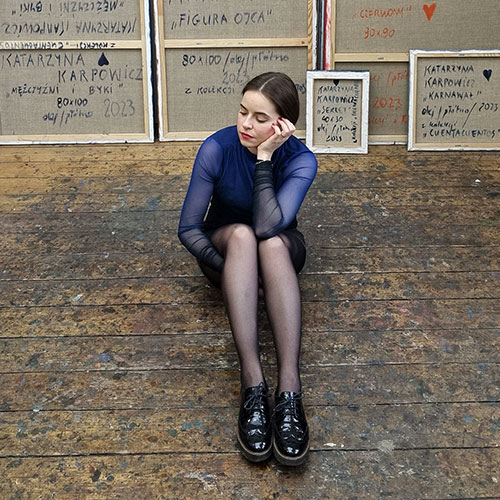
What concerns me now, as I return from Kasia’s place to the Austeria publishing house, is this sad note – a Kazimierian intuition about these representations. The tragic signal that comes from these faces – portraits, singles, replicated, shaded by long rows. Beautiful and signifying farewell. Sparkling not in the glimmer of a glass of burgundy, but in the glow of an unseen fire. Yes, this is the world of Picasso-Chagall pages of Eastern Borderland fires. Pogroms? The imagination leads one far, but not too far. The reality of the portraits reflected in the spinning cards has more than once led us even farther.
Burning. Fiery.
You and I. We.
Torches of love.




